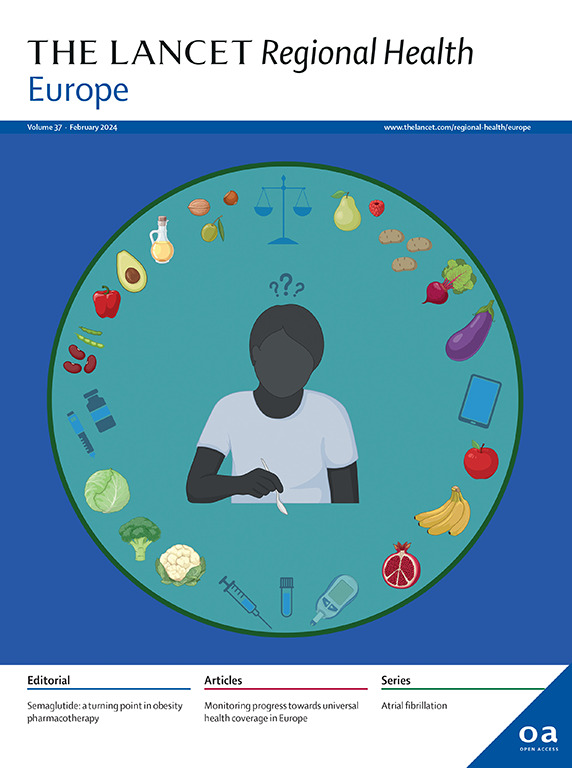Income inequalities and mortality by generation among individuals with a foreign background in Sweden: a population-based study
IF 13.6
Q1 HEALTH CARE SCIENCES & SERVICES
引用次数: 0
Abstract
Background
Evidence shows that both the mortality advantage and the lower income inequalities in mortality that characterise recent international migrants tend to disappear with time spent in the receiving country. This study examines whether absolute and relative income inequalities in mortality also increase by migrant generation in Sweden.
Methods
Longitudinal data from Sweden’s population registries (2004–2018) was used to identify residents aged 25–64. An open cohort design was employed using slope (SII) and relative (RII) indices of inequality from negative binomial regressions to estimate associations between income rank position and all-cause mortality among majority population Swedes and individuals with a foreign background, classified by generation and by European or non-European origin. Sub-analyses assessed the contribution of external causes to income inequalities in mortality.
Findings
Male descendants of migrants with non-European backgrounds exhibited higher relative income inequalities in mortality (ranging from RIIG2.5: 6.72 to RIIG2: 11.47) than first generation non-European migrant (RII: 1.7; 95% confidence interval (CI): 1.28–2.26) and majority population men (RII: 4.73; 95% CI: 4.36–5.12). External causes accounted for 56–60% of these inequalities in mortality. Absolute income inequalities in mortality among men showed similar patterns to those observed for relative inequalities. Women showed lower absolute and relative inequalities compared to men across origins and by generation.
Interpretation
Income-related inequalities in mortality appear to increase by migrant generation, particularly among men with non-European backgrounds, with external causes playing a significant role. Health and non-health targeted interventions focusing on social determinants are needed to address income inequalities in mortality.
Funding
Swedish Research Council for Health, Working Life and Welfare, and Swedish Research Council.
瑞典具有外国背景的个人的收入不平等和死亡率:一项基于人口的研究
有证据表明,死亡率优势和较低的死亡率收入不平等是最近国际移民的特征,随着在接收国的时间推移,这种不平等往往会消失。本研究考察了瑞典移民一代在死亡率方面的绝对和相对收入不平等是否也会增加。方法使用瑞典人口登记处(2004-2018)的纵向数据来确定25-64岁的居民。采用开放队列设计,采用负二项回归的斜率(SII)和相对(RII)不平等指数,估计瑞典多数人口和具有外国背景的个人的收入等级和全因死亡率之间的关系,按世代和欧洲或非欧洲血统分类。次级分析评估了外部原因对收入不平等对死亡率的影响。与第一代非欧洲移民相比,非欧洲移民的小后代在死亡率方面表现出更高的相对收入不平等(从RIIG2.5: 6.72到RIIG2: 11.47)。95%置信区间(CI): 1.28-2.26)和大多数男性人群(RII: 4.73;95% ci: 4.36-5.12)。外部原因占这些死亡率不平等的56-60%。男性死亡率的绝对收入不平等表现出与相对不平等相似的模式。与男性相比,不论出身还是世代,女性的绝对不平等和相对不平等程度都较低。与收入相关的死亡率不平等似乎在移民一代中有所增加,特别是在非欧洲背景的男性中,外部原因起着重要作用。需要针对社会决定因素的保健和非保健干预措施,以解决死亡率方面的收入不平等问题。资助瑞典健康、工作生活和福利研究委员会以及瑞典研究委员会。
本文章由计算机程序翻译,如有差异,请以英文原文为准。
求助全文
约1分钟内获得全文
求助全文
来源期刊

Lancet Regional Health-Europe
Multiple-
CiteScore
19.90
自引率
1.40%
发文量
260
审稿时长
9 weeks
期刊介绍:
The Lancet Regional Health – Europe, a gold open access journal, is part of The Lancet's global effort to promote healthcare quality and accessibility worldwide. It focuses on advancing clinical practice and health policy in the European region to enhance health outcomes. The journal publishes high-quality original research advocating changes in clinical practice and health policy. It also includes reviews, commentaries, and opinion pieces on regional health topics, such as infection and disease prevention, healthy aging, and reducing health disparities.
 求助内容:
求助内容: 应助结果提醒方式:
应助结果提醒方式:


